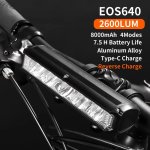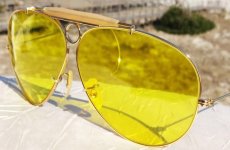marka-ee
100 W
- Joined
- Mar 24, 2020
- Messages
- 252
I know, I know, there are other headlight threads, but things change rapidly.
For example, I have small rechargeable bike headlights from both Aldi and Lidl here in Europe, and they both feature the same type of new reflector design. The LED is on top, and it shines down onto a correctly optically engineered reflector, which then shoots the beam forward.
The key word here is correctly optically engineered. I've gone through plenty of headlights that have something that might look good on paper or in hand with nice little parabolic reflectors, but unfortunately the characteristics of modern LEDs are not the same as filaments ( LED emitters radiate mostly in one direction and are absolutely not close to being a point source which requires different design), so old reflector technology typically doesn't work very well at throwing the energy exactly where we need it.
I think the situation is improving for the more powerful e-bike headlights though. They are actually starting to use the proper LED radiance data and good optical engineering software to produce the correct patterns, etc.
But now I'm shopping for something a little more powerful. Does anybody have any... knowledge of something around the $50 range that puts out a good 300 lumens or so? At this point I only want to consider lights that have the advanced type of reflector that's specifically good for LEDs at this point.
For example, I have small rechargeable bike headlights from both Aldi and Lidl here in Europe, and they both feature the same type of new reflector design. The LED is on top, and it shines down onto a correctly optically engineered reflector, which then shoots the beam forward.
The key word here is correctly optically engineered. I've gone through plenty of headlights that have something that might look good on paper or in hand with nice little parabolic reflectors, but unfortunately the characteristics of modern LEDs are not the same as filaments ( LED emitters radiate mostly in one direction and are absolutely not close to being a point source which requires different design), so old reflector technology typically doesn't work very well at throwing the energy exactly where we need it.
I think the situation is improving for the more powerful e-bike headlights though. They are actually starting to use the proper LED radiance data and good optical engineering software to produce the correct patterns, etc.
But now I'm shopping for something a little more powerful. Does anybody have any... knowledge of something around the $50 range that puts out a good 300 lumens or so? At this point I only want to consider lights that have the advanced type of reflector that's specifically good for LEDs at this point.







